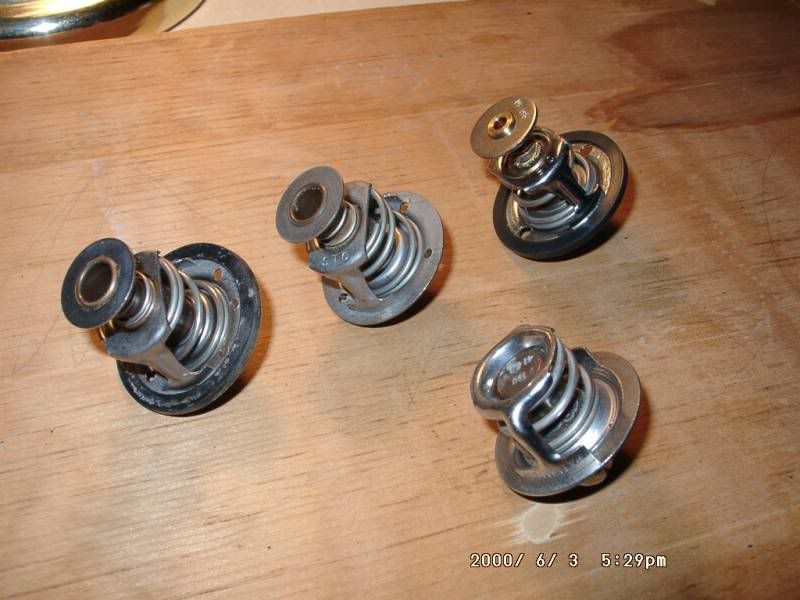All ICE gaskets/seals/etc face thermal contraction/expansion...some
more than others. Worse if different metals on either side of the
gasket...part of why early alu heads had head gasket issues
I'm not buying that synopsis and still say for thermal management of the hottest
place on any ICE (piston) and that is around the CC
Now for rotating shaft seals...sure thing. More so with journal type bearings
(non o-ring or some such). Ditto lots of rear crank seals...heck even some front
crank seals. Some old were packed, many has a coiled spring inside to keep it
tight during the thermal contraction/expansion
SMOG has really messed up what us civilians can do with the thermal management
system. But for my GMT400, it was only during the early days and did lots of
noodling and thermal coupled my 454
This image is of the final modifications of 180*F thermostats. Wanted 160*F,
but too close to the SMOG mandated control system. The switch from open loop
to closed loop control is right around there and no confident enough to have
full power mode...cuz the computer kept if open loop
Notice all of the holes both in numbers, placement and dia...dialing it in with
a home based lab/tools (borrowed the thermal couple box/recorder)
This lead me to my final thermostat and is a 180*F with a bypass valve and a single
3/32" dia hole...close to the OEM weep hole from the stat manufacturer

thermostat thermostathole
Again, in extreme ambient temps...why lots of diesel's cover all to
a portion of their main coolant radiator...to keep their ICE's up
in temp...as it can be over cooled.
In front of the main coolant radiator...it can be over cooled but the
main radiator will then heat up the ATF. After the main radiator has
the potential of then over cooling the ATF if the ambient is extremely
cold.
Again, today's systems have lots of engineering to cover 'most' of
the bases on this, but note that some OEMs off kits to cover the
main radiator for those who live in extreme cold...
